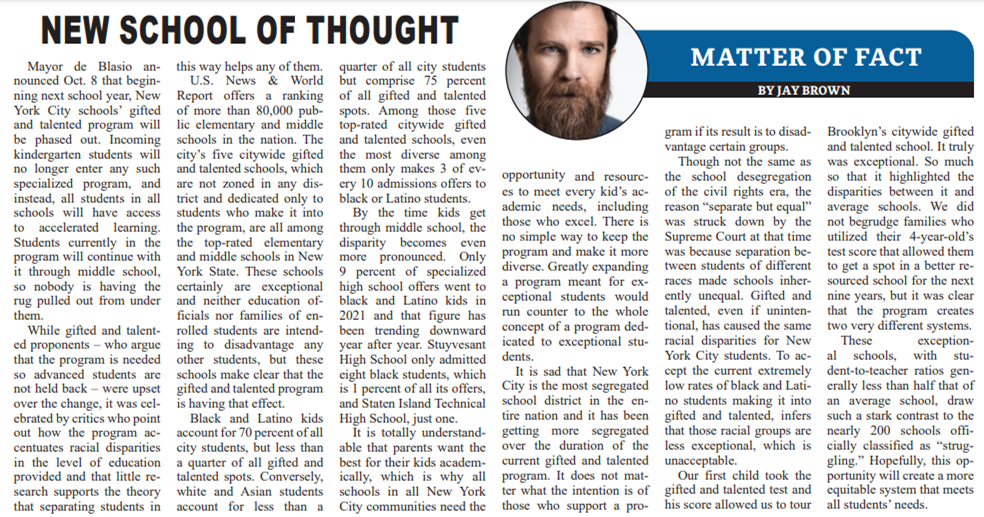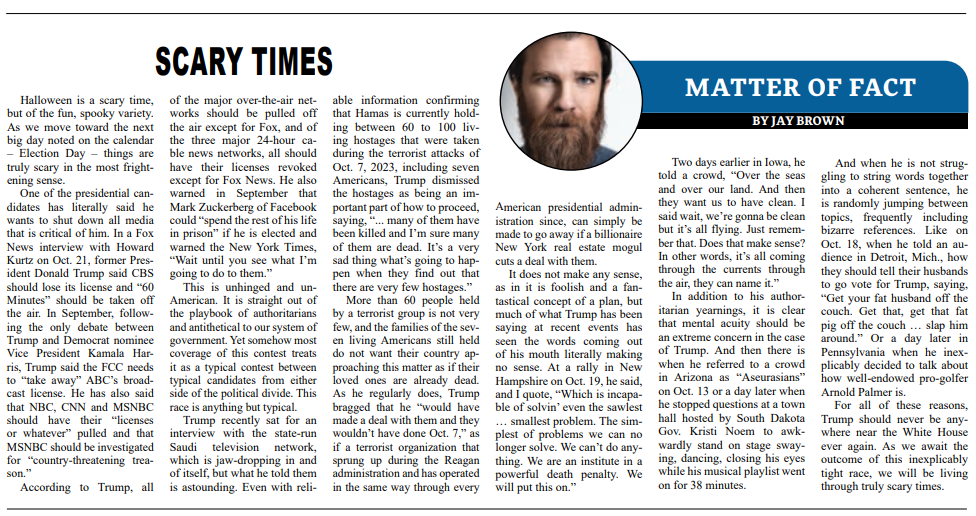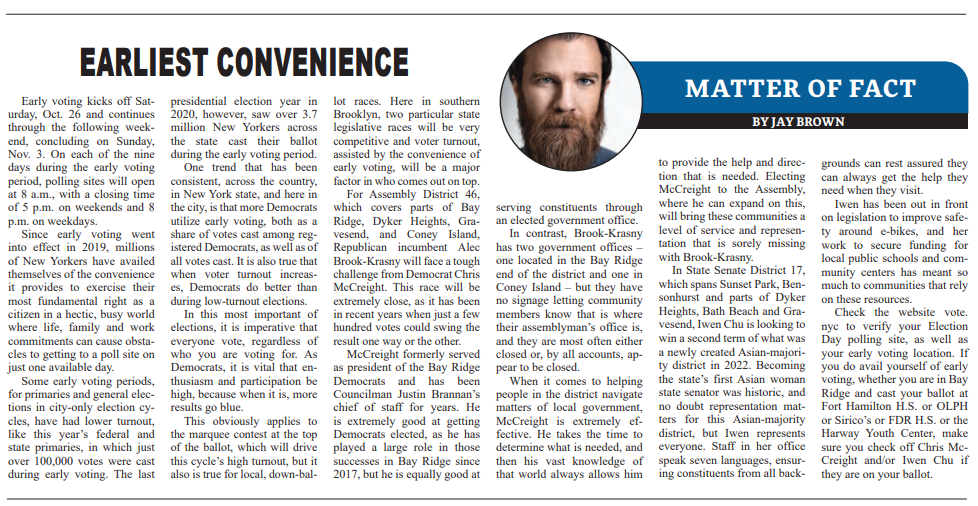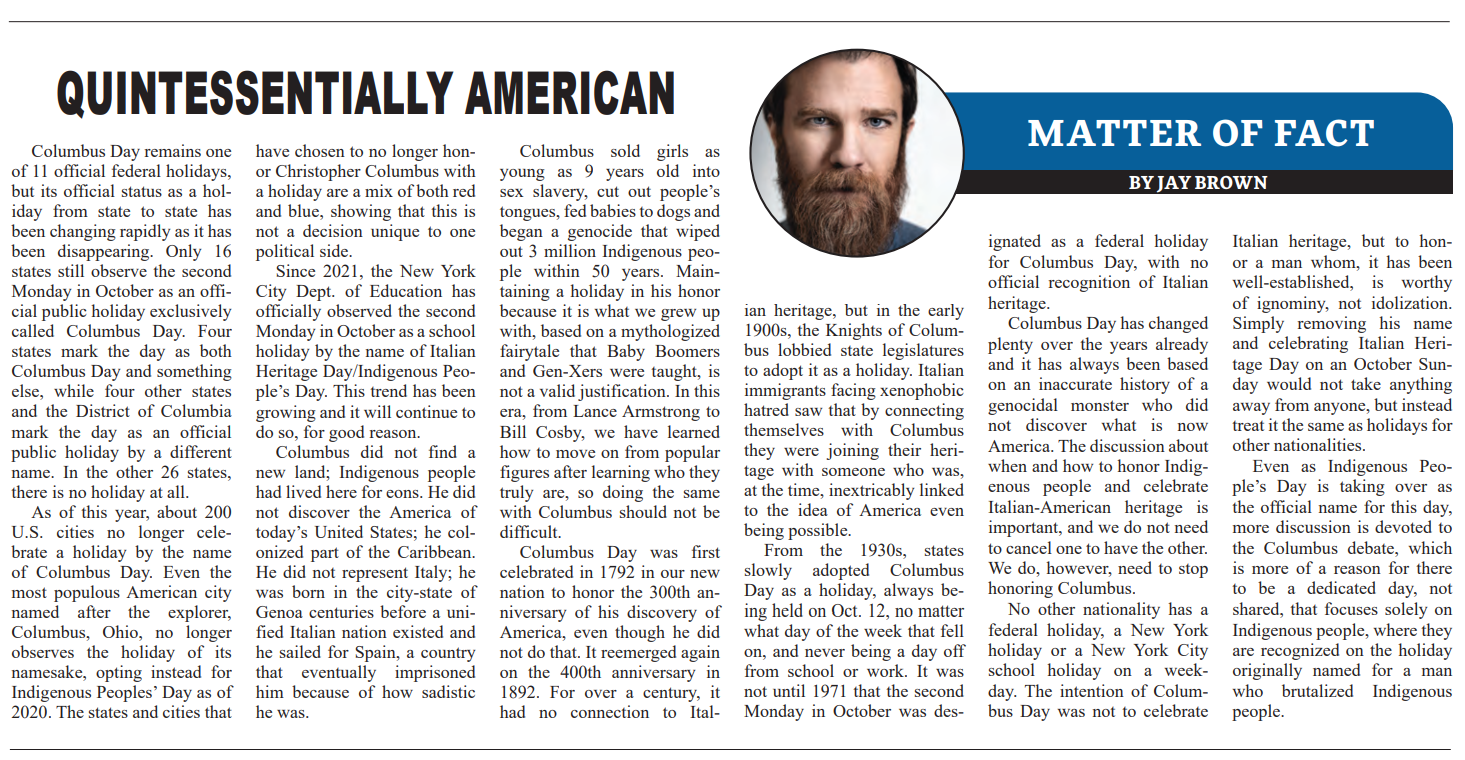This column, from the weekly opinion piece MATTER OF FACT, first appeared on BrooklynReporter.com, the Home Reporter and Spectator dated October 15, 2021
Mayor de Blasio announced October 8 that beginning next school year, New York City schools’ gifted and talented program will be phased out. Incoming kindergarten students will no longer enter any such specialized program and instead, all students in all schools will have access to accelerated learning. Current students in the program will continue with it through middle school, so nobody is having the rug pulled out from them.
While gifted and talented proponents, who argue that the program is needed so advanced students are not held back, were upset over the change, it was celebrated by critics who point out how the program accentuates racial disparities in the level of education provided and that little research supports the theory that separating students in this way helps any of them.
U.S. News & World Report offers a ranking of over 80,000 public elementary and middle schools in the nation. The city’s five citywide gifted and talented schools, which are not zoned in any district and dedicated only to students who make it into the program, are all among the top rated elementary and middle schools in New York state. These schools certainly are exceptional and neither education officials nor families of enrolled students are intending to disadvantage any other students, but these schools make clear that the gifted and talented program is having that effect.
Black & Latino kids account for 70% of all city students, but less than a quarter of all gifted and talented spots. Conversely, white and Asian students account for less than a quarter of all city students but comprise 75% of all gifted and talented spots. Among those five top-rated citywide gifted and talented schools, even the most diverse among them only makes 3 of every 10 admissions offers to black or Latino students.
“It is sad that New York City is the most segregated school district in the entire nation and it has been getting more segregated over the duration of the current gifted and talented program.”
By the time kids get through middle school, the disparity becomes even more pronounced. Only 9% of specialized high school offers went to black and Latino kids in 2021 and that figure has been trending downward year after year. Stuyvesant High School only admitted eight black students, which is 1% of all its offers, and Staten Island Technical High School, just one.
It is totally understandable that parents want the best for their kids academically, which is why all schools in all New York City communities need the opportunity and resources to meet every kid’s academic needs, including those who excel. There is no simple way to keep the program and make it more diverse. Greatly expanding a program meant for exceptional students would run counter to the whole concept of a program dedicated to exceptional students.
It is sad that New York City is the most segregated school district in the entire nation and it has been getting more segregated over the duration of the current gifted and talented program. It does not matter what the intention is of those who support a grogram if its result is to disadvantage certain groups.
Though not the same as the school desegregation of the civil rights era, the reason “separate but equal” was struck down by the Supreme Court at that time was because separation between students of different races made schools inherently unequal. Gifted and talented, even if unintentional, has caused the same racial disparities for New York City students. To accept the current extremely low rates of black and Latino students making it into gifted and talented, infers that those racial groups are less exceptional, which is unacceptable.
Our first child took the gifted and talented test and his score allowed us to tour Brooklyn’s citywide gifted and talented school. It truly was exceptional. So much so that it highlighted the disparities between it and average schools. We did not begrudge families who utilized their 4-year-old’s test score that allowed them to get a spot in a better resourced school for the next nine years, but it was clear that the program creates two very different systems.
These exceptional schools, with student-to-teacher ratios generally less than half that of an average school, draw such a stark contrast to the nearly 200 schools officially classified as “struggling.” Hopefully, this opportunity will create a more equitable system that meets all students’ needs.




